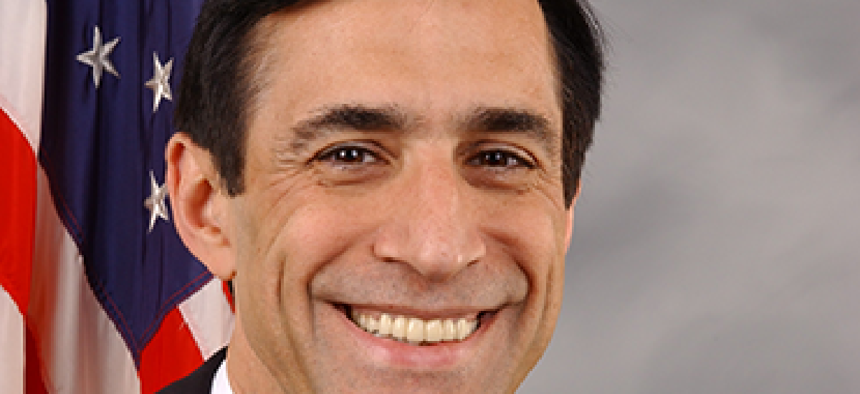IT acquisition bill would push 'bid-to-price' selection process

Latest draft of FITARA puts a new twist on the 'lowest price technically acceptable' versus 'best value' debate.

Rep. Darrell Issa's acquisition reform bill puts a new twist in the debate between low price and value.
An updated draft Federal IT Acquisition Reform Act might open the door to a new way of choosing how to evaluate contractors’ proposals, and because the source selection technique would be in a statute, agencies could slowly shift toward that approach.
Rep. Darrell Issa (R-Calif.), chairman of the Oversight and Government Reform Committee, included the fixed-price technical competition or bid-to-price method in his FITARA proposal. The little-known selection process attempts to balance price and value while weeding out low-balling bidders.
Under this technique, the agency issuing a solicitation would set a predetermined award price and invite contractors to compete on other factors, such as quality, past performance or technical details. With the price set beforehand, evaluation of proposals would be simpler and based solely on technical factors.
The buyer would need a good understanding of the acquisition’s requirements and the technologies involved to use the technique appropriately. That knowledge is also important to determine whether agencies would be getting the best value from the solutions offered for the established award price.
Issa’s committee wrote that if used properly, the approach could lower bid and proposal costs while simplifying the evaluation process, which can alleviate pressures on the acquisition workforce.
“This type of evaluation technique is not prohibited by the” Federal Acquisition Regulation, the committee wrote. But “the FAR lacks clear guidance on when a ‘fixed-price technical competition’ approach would be appropriate.”
The provision in FITARA is a small part of the overall reform bill, which includes codifying the principles in the Office of Federal Procurement Policy’s Myth-Busters memo and changing the CIO to a political appointee. But the committee pays plenty of attention to the overall concerns about lowest price technically acceptable (LPTA) versus best value in a new discussion document released March 14. It outlines the reforms to the original draft bill, which was released in September. In discussions, Issa received blowback regarding the FITARA provision.
“A few commenters equated this provision with LPTA. That is a misunderstanding,” the committee wrote, arguing the differences as well as the benefits of the provision.
Whichever way it is viewed, Issa is giving the approach credibility, and that might have an impact on agency officials, said Trey Hodgkins, senior vice president of the global public sector at TechAmerica. History has shown that when Congress “blesses” an approach in acquisition, as it would fixed-price technical competition, agency officials tend to use it more frequently, he said. Yet the acquisition workforce is still averse to risk and avoids innovation at times, to the detriment of taxpayers.
Fixed-price technical competition is not widely known or widely used. “They had to explain it to us,” Hodgkins said.
That leads to a larger question about how it would be used.
“How it is implemented will be where the rubber hits the road,” said Roger Jordan, vice president of government relations at the Professional Services Council. Officials will need training and a deep understanding of how it is supposed to work.
However, Hodgkins said the new approach would not foil LPTA, which bases awards on the lowest price. In tight budget times, officials can more easily justify their award decisions when they choose the lowest price, although that can undermine quality.
“LPTA still will be -- if not officially, then unofficially - the overall preference,” he said. And as for fixed-price technical competition, “it still gives overseers the ability to second-guess a decision.”
NEXT STORY: SEWP V to address supply chain issues





